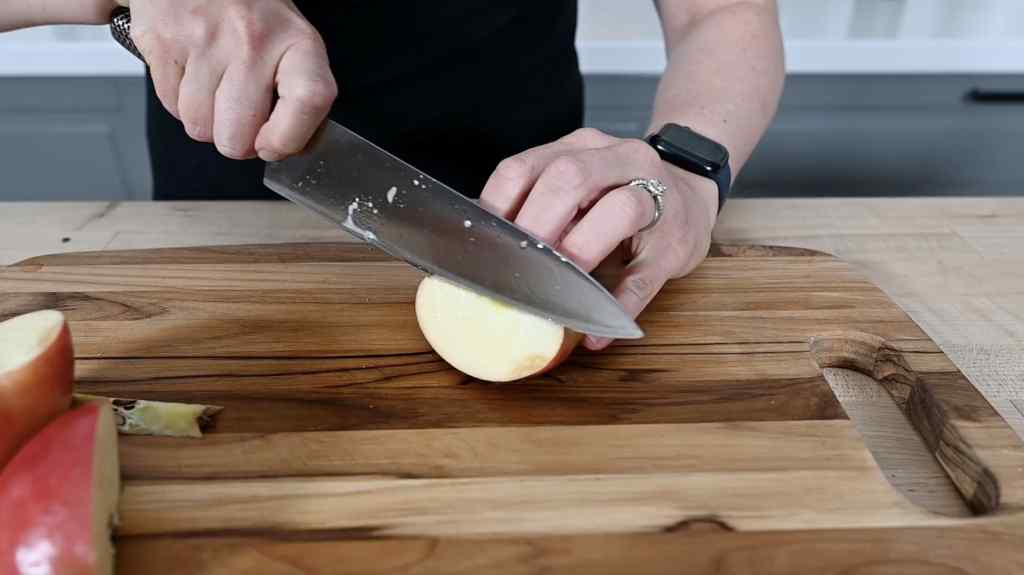For culinary experts, knowing the various knife types is vital. Among the plethora of choices, the German knife types list emerges as a fundamental element of culinary expertise. Renowned for their precision, durability, and exceptional craftsmanship, German knives have become a staple for chefs and cooking aficionados alike.
This German knife types list serves not merely as a collection of tools but as a guide to achieving culinary greatness. Whether you're chopping, slicing, or dicing, each knife on this list caters to a specific purpose, elevating your culinary experience.

The Significance of Knife Variety
Before we explore the specific types of German knives, it's important to recognize the advantages of having a diverse set of knives at your disposal. Each knife is crafted for particular tasks, enhancing efficiency and precision. For example, using a chef's knife for delicate tasks like peeling may lead to less than desirable results when compared to using a paring knife.
German knives are especially esteemed for their ability to tackle various kitchen tasks with grace. Their sturdy construction often features a full tang, which provides balance and controlvital attributes for any professional kitchen.
Must-Have Classic German Knives for Every Chef
1. Chef's Knife
Often regarded as the most vital tool in any chef's arsenal, the chef's knife is a must-have. German chef's knives, usually between 8 to 10 inches long, are incredibly versatile, ideal for chopping, slicing, and dicing. The weight and balance of a German chef's knife make it perfect for heavy-duty tasks and extended use, which is why it consistently ranks high on any German knife types list.
2. Paring Knife
Smaller and more nimble, the paring knife excels at intricate tasks like peeling, trimming, and garnishing. German paring knives are celebrated for their sharpness and accuracy, making them indispensable for chefs who pay close attention to detail in their presentations.
3. Bread Knife
Equipped with a serrated edge, the bread knife is specifically designed to slice through tough crusts and soft bread without squashing it. German bread knives tend to be longer and sturdier, ensuring consistent, clean slices every single time.
4. Boning Knife
The boning knife features a narrow, flexible blade that's essential for boning meat and fish. German boning knives provide both precision and flexibility, enabling chefs to skillfully navigate around bones and joints.
5. Santoku Knife
Despite its Japanese origins, the Santoku knife has gained popularity among German manufacturers. It is exceptional for slicing, dicing, and mincing, with the design of a German Santoku knife often including a wider blade, which is perfect for scooping up chopped ingredients.
What Sets German Knives Apart: Craftsmanship and Durability
The meticulous craftsmanship of German knives is unparalleled. They are typically made from high-carbon stainless steel, providing optimal sharpness and resistance to corrosion. This is particularly advantageous in professional kitchens, where knives experience frequent use.
The forging process also contributes significantly to the durability of these knives. Many German knives are forged from a single piece of steel, which enhances their strength and balance. This quality is essential for chefs who rely on reliable tools to withstand the demands of everyday use.
Proper Maintenance of Your German Knives
To maximize the lifespan of your knives, proper maintenance is crucial. Regular honing and sharpening will keep the blades performing at their best. Additionally, it's vital to clean your knives appropriately, as detailed by Wusthof, a reputable German knife manufacturer.
Correctly storing your knives is equally important. Utilizing a knife block or a magnetic strip can help prevent blade damage and maintain sharpness. Avoid placing your knives in a drawer, where they can become dull or damaged.
Selecting the Ideal Knife for Your Requirements
When choosing from the German knife types list, think about the tasks you perform most often in your kitchen. While a chef's knife is versatile for various jobs, specialized knives like the boning knife or the paring knife are invaluable for certain tasks.
Moreover, consider the handle design and weight of the knives. A comfortable grip and balanced weight are essential for reducing fatigue during prolonged use. Visiting a store and getting a feel for different knives can help you find the perfect fit for your needs.

Frequently Asked Questions
What differentiates German knives from others?
German knives are celebrated for their durability, weight, and balanced feel. Typically crafted from high-carbon stainless steel, they provide excellent corrosion resistance and a sharp edge.
How frequently should I sharpen my German knives?
Regular honing after each use is advised to maintain the edge. You should sharpen them every few months, depending on how often you use them.
Are German knives suitable for all food preparation tasks?
Absolutely! German knives are versatile and designed for a wide range of kitchen tasks. However, using the right knife for specific duties enhances efficiency and the quality of your results.
If you're curious about the artistry involved in crafting these tools, you may want to read more about how a chef's knife is made in this detailed article on how chef's knives are made. Additionally, explore the differences between German and Japanese knives in this insightful comparison. For tips on blade regrind services, check out this guide on blade regrind services or learn more about holding techniques. If you are interested in folding knives, consider reading about EDC knife rotation and the different steel types.


























